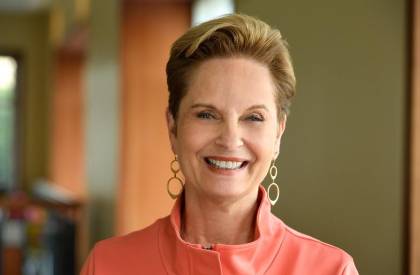Jennifer Wilson
The New Yorker
Originally posted 25 Dec 23
Here is an excerpt:
What are all these open couples, throuples, and polycules suddenly doing in the culture, besides one another? To some extent, art is catching up with life. Fifty-one per cent of adults younger than thirty told Pew Research, in 2023, that open marriage was “acceptable,” and twenty per cent of all Americans report experimenting with some form of non-monogamy. The extramarital “entanglements” of Will and Jada Pinkett Smith have been tabloid fodder for the past two years. (Pinkett Smith once clarified that their marriage is not “open”; rather, it is a “relationship of transparency.”) In 2020, the reality show “House Hunters,” on HGTV, saw a throuple trying to find their dream home—one with a triple-sink vanity. The same year, the city of Somerville, Massachusetts, allowed domestic partnerships to be made up of “two or more” people.
Some, like the sex therapist (and author of “Open Monogamy, A Guide to Co-Creating Your Ideal Relationship Agreement,” 2021), Tammy Nelson, have attributed the acceptance of a greater number of partners to pandemic-born domestic ennui; after being stuck with one person all day every day, the thinking goes, couples are ready to open up more than their pods. Nelson is part of a cohort of therapists, counsellors, and advice writers, including Esther Perel and the “Savage Love” columnist Dan Savage, who are encouraging married couples to think more flexibly about monogamy. Their advice has found an eager audience among the well-heeled attendees of the “ideas festival” circuit, featured in talks at Google, SXSW, and the Aspen Institute.
The new monogamy skepticism of the moneyed gets some screen time in the pandemic-era breakout hit “The White Lotus.” The show mocks the leisure class as they mope around five-star resorts in Hawaii and Sicily, stewing over love, money, and the impossibility, for people in their tax bracket, of separating the two. In the latest season, Ethan (Will Sharpe) and Harper (Aubrey Plaza) are an attractive young couple stuck in a sexless marriage—until, that is, they go on vacation with the monogamish Cameron (Theo James) and Daphne (Meghann Fahy). After Cameron and Harper have some unaccounted-for time together in a hotel room, Ethan tracks down an unbothered Daphne, lounging on the beach, to share his suspicion that something has happened between their spouses. Some momentary concern on Daphne’s face quickly morphs—in a devastatingly subtle performance by Fahy—into a sly smile. “A little mystery? It’s kinda sexy,” she assures Ethan, before luring him into a seaside cove. That night Ethan and Harper have sex, the wounds of their marriage having been healed by a little something on the side.
Here is my summary:
The article discusses the increasing portrayal and acceptance of non-monogamous relationships in contemporary culture, particularly in literature, cinema, and television. It notes that open relationships, throuples, and polyamorous arrangements are gaining prominence, reflecting changing societal attitudes. The author cites statistics and cultural examples, including a Gucci perfume ad and a plot twist in the TV series "Riverdale." The rise of non-monogamy is linked to a broader shift in societal norms, with some attributing it to pandemic-related ennui and a desire for more flexibility in relationships. The text also delves into the historical roots of polyamory, mentioning the Kerista movement and its adaptation to conservative times in the 1980s. The author concludes by expressing a desire for a more inclusive and equitable representation of polyamory, critiquing the limited perspective presented in a specific memoir discussed in the text.










